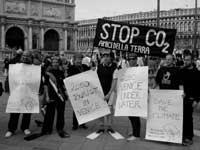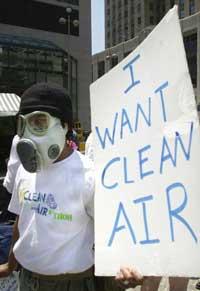Environmental protection measures year after year
On the occasion of the celebration of the Earth Summit in August, the environmental organization World Watch has taken a photo of the most important milestones of the environment in the last 40 years.
At the end of August, the United Nations will convene the Earth Summit in Johannesburg. In 1992, the results of the 10-year program agreed in Rio de Janeiro will be evaluated and a thousand will be analyzed.
To warm up the atmosphere of the conference, the American environmental organization World Watch has reviewed the main environmental events.
Under the slogan "The Road to Johannesburg", he has completed a journey through time and exposed it on the internet. They have presented it with beautiful photos and links, yes, in English. In this article we collect some of the moments mentioned in the tour in order to review the immediate past of the environment.
The 60’s Time for Awakening

The road to Johannesburg begins with the book Silent Spring, by biologist Rachel Carlson. The book, published in 1962, was for many the starting point of the modern movement for the environment.
Carlson spoke for the first time about the influence of pesticides on the environment and health. He related the use of DDT to the loss of various bird species and talked about the relationship between pesticides and cancer.
Currently, Carlson's forecasts are proven and the treaty to eliminate many of these compounds is in force by 2010. The environmental organization has also not forgotten the Pesticide disaster in India. About ten thousand people died in 1984 when the Bopal city pesticide company poured 40 tons of isocyanate methyl into the air.
In the 1960s, society began to realize that it could not be constantly developed at the expense of nature, and the first environmental mobilizations are also back then. Earth Day was first celebrated in 1970 in the United States, and 20 million people took to the streets.
70: You can't go on like this
In the 1970s, ecological awareness began to become widespread. The Club of Rome, made up of economists, scientists and entrepreneurs, published the report ‘The Limits of Growth’, claiming the need to put limits on population growth, pollution and exploitation of resources; otherwise, for the year 2100 the Earth.
The United Nations organized the Human Environment Conference in Stockholm in 1972. Participants from 114 countries met, but only one minister of the environment. In fact, many countries still did not exist.
In 1974 two researchers suggested that CFCs could destroy ozone and in 1985 the ‘ozone hole’ was detected over Antarctica. The finding was serious and significant, as due to the loss of ozone, the researchers thought that the measuring devices were damaged. But the only one that was damaged was the ozone layer. Two years later, the Montreal Protocol was signed to eliminate ozone-destroying substances from the market. The industrialized countries had a deadline until 1996, the others have a deadline until 2010.
80: Nuclear disasters and climate change
The 1980s began in the shadow of a nuclear catastrophe that was not the last. In 1979 it partially melted the reactor area of the US nuclear power plant Three Mile Island and released radiation. In 1986 the accident occurred in Chernobyl. It is estimated that the accident has killed some 300,000 people and mortgaged the lives of 20 million and that the radiation remains will not disappear before 200 years.
In recent times, with the excuse that nuclear power plants do not emit carbon dioxide, some of them are carrying out large campaigns.

Precisely in the 1980s, the first concerns about climate change appeared. And they came from the United States that has rejected the Kyoto Protocol. The local Environment Agency and the Academy of Science warned about global warming of the concentration of carbon dioxide and other gases in the atmosphere.
90: Earth Summit and Promises
In 1992, the largest meeting in history on Environment and Development was held in Rio de Janeiro. Design of a Agenda 21 work programme for sustainable development for 10 years. In August it will realize compliance with the agreed, but no positive results are expected.
Looking back, it seems that the 1990s was a decade of meetings and agreements: on biodiversity, climate change, demography, women's situation, trade in GMOs... Many words.
In 40 years it has been achieved that we all be ecologists, in 40 years it will be achieved that we all act as ecologists.
Published in the supplement Estación de Gara.
Buletina
Bidali zure helbide elektronikoa eta jaso asteroko buletina zure sarrera-ontzian











